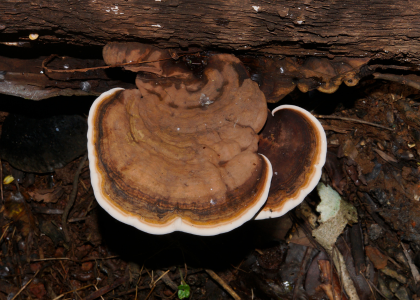How to Eradicate Ganoderma Disease in Oil Palm Plantations / How to Use Aussie Ganoderma
Read More

Participate to Building a More Advanced Sustainable Plantation and Agriculture Industry in Indonesia


Ganoderma disease in oil palm
is known as one of the biggest threats to farmers. This disease can cause
severe damage, up to and including plant death, if not addressed immediately.
However, there is encouraging news about a successful treatment of ganoderma
disease in a fairly short period of time, only two weeks. In this case, the
ganoderma fungus that was attacking the oil palm plant managed to dry up, fall
out of place, and the plant even started to grow new roots. How does this
process happen? Here is the full explanation.
The
Process of Ganoderma Infection
Ganoderma disease is caused
by the fungus Ganoderma boninense, which attacks the roots and trunk of oil
palms. The fungus infects the plant through roots that have been contaminated
with spores. Once inside the roots, the fungus multiplies, damages the root
tissue, and inhibits the absorption of water and nutrients. The first symptoms
of the disease are yellowing and wilting of the leaves, and decreased
production of fresh fruit bunches (FFB). If not treated immediately, the oil
palm plant may die.
Ganoderma
Treatment in Two Weeks: A Proven Effective Solution
In this successful case, the
oil palm plantation owner used an intensive control approach based on
biological methods and proper farm management techniques. Within two weeks, the
healing process of the plant was significant, with the ganoderma fungus drying
up, falling out of place, and the plant starting to grow new roots. Here are
some of the steps implemented to achieve these results:
1. Identify Infected Plants the
first step is to inspect and identify infected plants to reduce the spread of
ganoderma spores to other plants.
2. Appropriate Nutrient
Provision Plant recovery after ganoderma infection
requires optimal nutritional support. Proper and balanced nutrition can speed
up the plant recovery process. Adequate nutrition will support the root system
to regrow and repair the damage caused by the infection. Nutrients with rich
nutrients, such as nitrogen, phosphorus and potassium, help to increase plant
resistance to stress and disease.